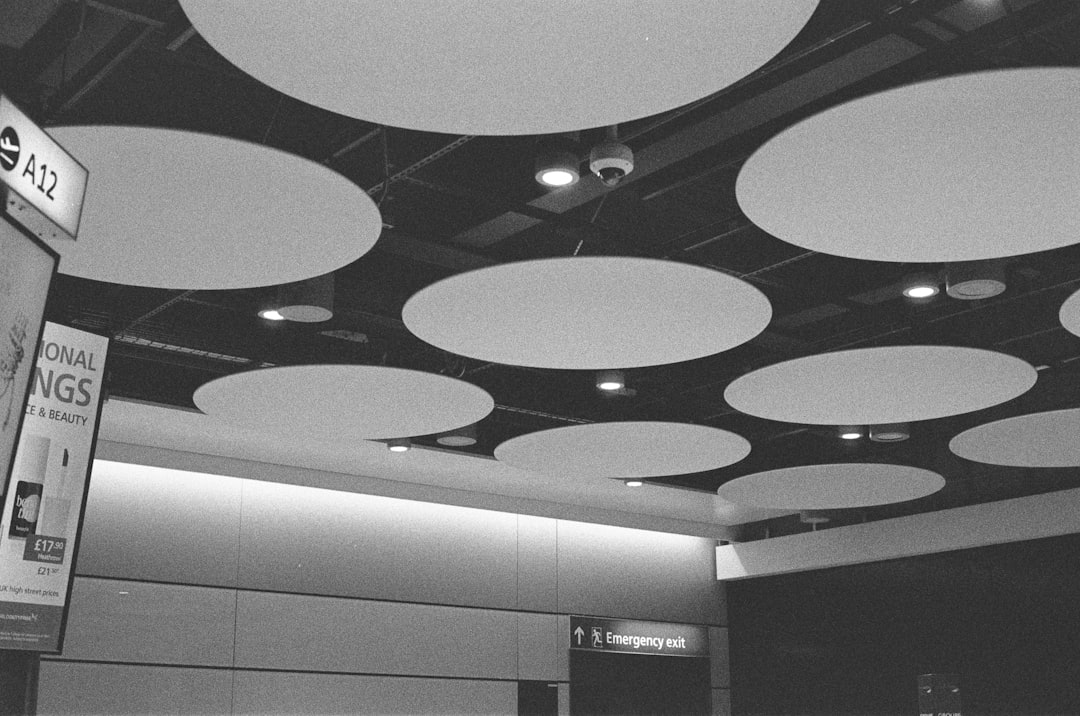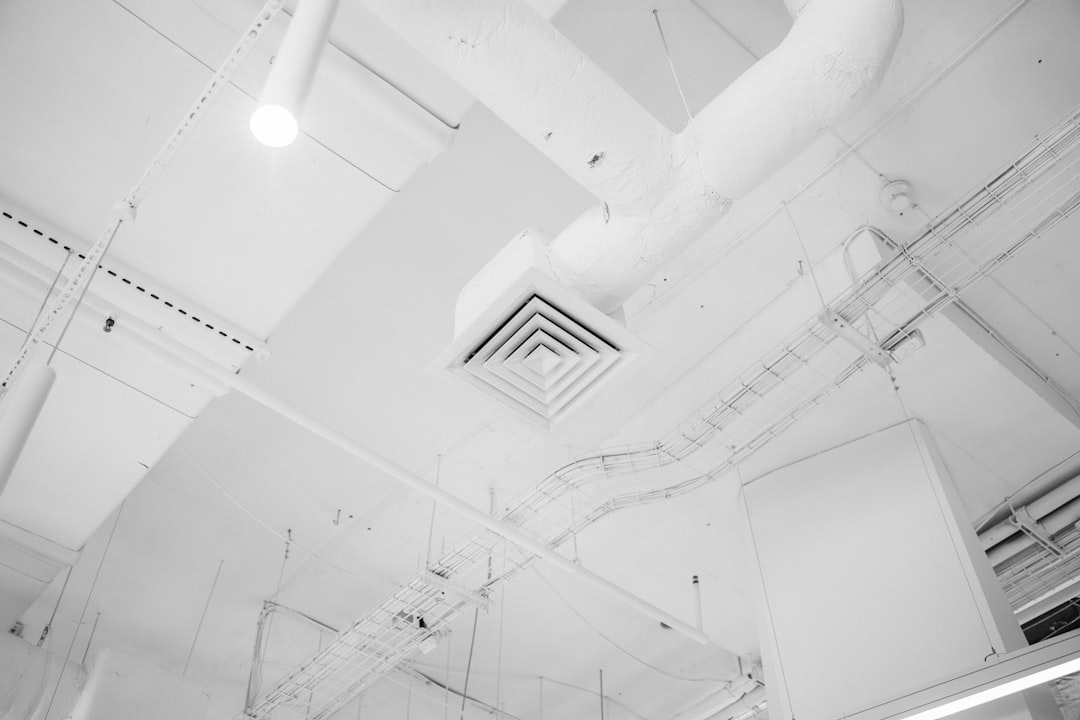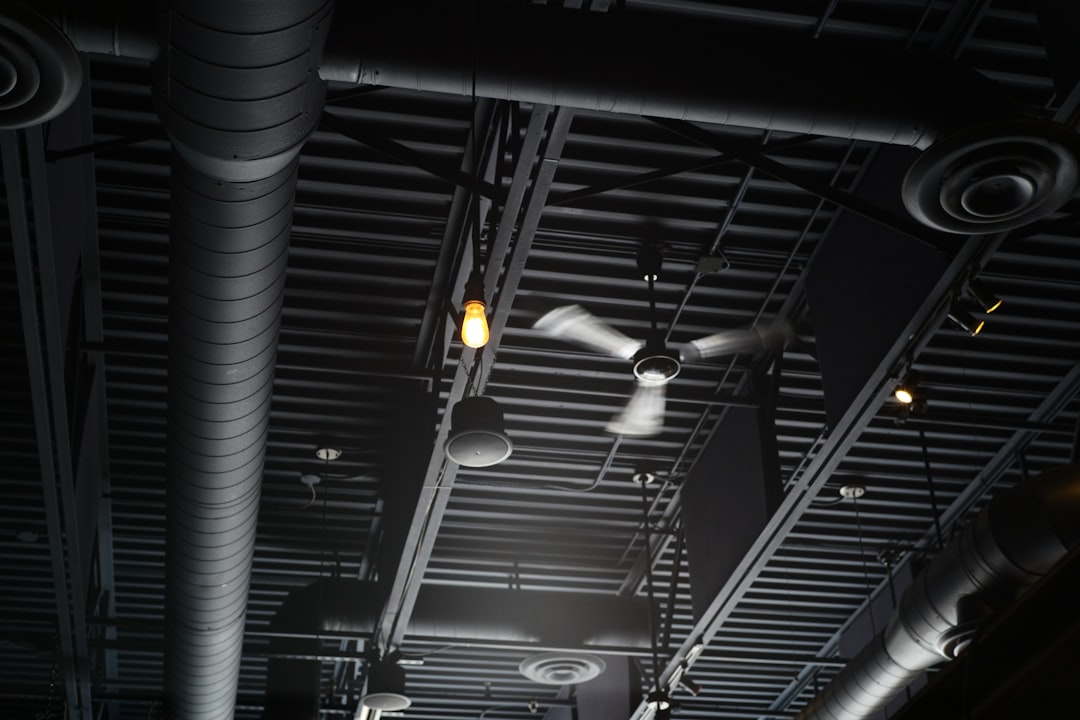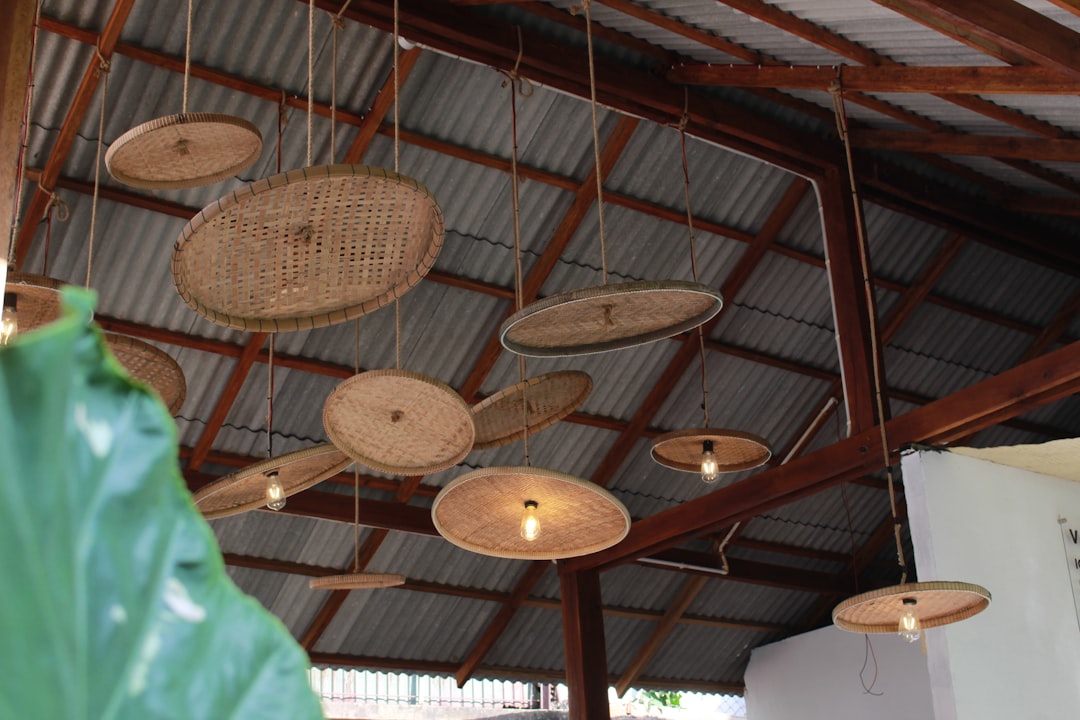

Engage prospects with a scan and streamline customer engagement with FREE QR code marketing tools by Sona – no strings attached!
Create a Free QR CodeFree consultation

No commitment

Engage prospects with a scan and streamline customer engagement with FREE QR code marketing tools by Sona – no strings attached!
Create a Free QR CodeFree consultation

No commitment
QR codes have evolved from a novelty to a strategic asset for ceiling fan installation services, bridging offline engagement with online action. They offer a practical way to solve industry pain points such as missing job data or lagging customer feedback, all without requiring app downloads or technical hurdles. For a broader view, see qr codes in marketing.
Ceiling fan installation services face pressure for timely, precise, and safe installations. The gap between field service and digital process management frequently leads to common frustrations: out-of-date manuals, misplaced support contacts, and paper-based feedback forms, all of which impede efficiency and customer satisfaction. These workflow problems also make it difficult to track high-value prospects, as many touchpoints are invisible to the CRM or marketing stack.
By integrating QR code solutions into field operations and customer touchpoints, ceiling fan installation providers can reduce errors and boost accountability. QR codes put up-to-date resources in technicians' hands, let customers quickly book appointments or leave reviews, and equip managers with actionable analytics, elevating service quality, retention, and operational clarity.

QR codes bridge persistent gaps between field events and digital records, addressing the frustration of missing job insights, delayed training, or outdated resources that can undermine both service quality and revenue. They replace analog friction points like printed manuals that go out of date, paper checklists that never make it back to the office, and phone-based support trees that keep technicians on hold when they need urgent guidance at the job site.
In practice, QR codes streamline workflows end to end. A technician scanning a code on a service ticket can check in on site, pull up the exact wiring diagram for a smart ceiling fan model, and log pre-install photos for compliance. A customer scanning a code on the invoice can register a warranty, book a follow-up balancing visit, or leave a review that routes to the right platform. With a platform like Sona QR, every scan generates data you can use to refine operations, improve training, and retarget leads with relevant offers. Start creating QR codes for free.
Here’s how QR codes can solve these challenges:
Moving from static paper resources to QR-enabled interactive guides means fewer errors, less troubleshooting time, and increased opportunities for engaging customers post-service. It also lets you close the loop with marketing and operations data, connecting real-world events to digital outcomes that drive revenue and retention.

The ceiling fan installation industry deals with operational blind spots, missed feedback, and difficulty keeping field teams aligned. QR codes serve as a connective layer between every physical and digital moment. They help ensure that when a customer is ready to act, or a technician needs a resource, the next step is always one scan away.
This matters because most ceiling fan projects happen in environments where speed and safety are critical. Technicians need wiring diagrams and torque guidance for different downrod lengths, while customers need simple ways to book inspections or register warranties. With QR codes, every printed asset, vehicle panel, or invoice can act as a gateway to the right action.
Integrating QR codes into high-traffic touchpoints turns pain points like lost opportunities and poor feedback into actionable data and increased conversions. For ceiling fan installation teams, this translates to higher satisfaction, fewer callbacks, and better alignment between marketing and field operations.

Fragmented processes and incomplete communication can be addressed with the right mix of QR code formats. Different formats trigger different actions, so choose based on the task you want to simplify. For ceiling fan installers, the most impactful formats tend to support documentation, contact, and service workflows.
Dynamic QR codes help ensure resource links remain current and prevent lost leads caused by outdated data. With Sona QR, you can manage all of these formats centrally, update destinations as products evolve, and track performance without touching the printed assets.

Avoid losing prospects to digital workflow gaps by placing QR codes where your audience naturally engages. In ceiling fan installation, this means any surface or document that connects to a high-intent moment: a neighbor noticing your van, a customer reviewing an invoice, or a technician onboarding on day one.
Analyzing engagement helps you funnel resources toward touchpoints that deliver leads and measurable interaction. Over time, you will build a data-backed playbook that tells you which placements and messages turn attention into appointments.

Make workflows more reliable and data-driven with QR applications that support technicians, customers, and managers alike. Focus on use cases that simplify complex tasks, reduce rework, and create a clear path from scan to value.
Well-designed QR workflows turn every customer interaction into a high-value, measurable touchpoint. They also make it easier to standardize best practices across teams and ensure customers always have a clear next step.
Each QR code scan is a data signal that captures intent, context, and behavior. When you deploy unique codes across touchpoints, you can segment your audience automatically and use those segments to drive personalized follow-up and retargeting campaigns.
For ceiling fan services, audiences often fall into distinct groups like homeowners seeking installation, property managers scheduling unit-wide upgrades, builders looking for subcontractors, and past customers who may need maintenance. Use QR scan context to differentiate these segments and tailor messaging accordingly.
With Sona QR, each code becomes a smart entry point into your funnel. You capture behavior-based segments rather than relying on assumptions, which improves targeting efficiency and lifetime value.
QR codes are more than handy links. They act as connectors across offline and digital campaigns, enabling real-time engagement and richer data collection. In a trade that relies on neighborhood visibility and word of mouth, QR codes make every physical impression measurable and actionable.
Here’s how QR codes enhance your broader marketing strategy for ceiling fan installation services:
QR codes serve as the offline onramp to your digital marketing engine and unlock a data layer across channels that were once hard to measure. With a centralized platform like Sona QR, you can manage all codes, monitor performance, and sync scan data with your CRM and ad platforms for a unified view of engagement.
Launching a QR campaign that supports technicians and delights customers starts with clear goals and disciplined execution. Think about the real jobs your codes need to do: reduce install errors, increase bookings, accelerate feedback, and capture revenue signals that your CRM can act on.
Use the following framework to plan, build, and optimize your campaign. Start small with one or two use cases such as post-install feedback and technician guide access, then expand once you validate impact. With the right instrumentation, you will see exactly which placements, messages, and audiences generate results.
Begin by aligning QR deployments with specific business outcomes. For ceiling fan installation services, prioritize moments where information gaps or friction lead to rework or lost revenue. Examples include eliminating confusion about smart fan wiring, speeding up service bookings, and capturing on-site reviews while the experience is fresh.
Choose the format that fits your job to be done. Static codes are simple and permanent, while dynamic codes provide flexibility and data. For most marketing and field operations, dynamic is the better choice since content changes and tracking matters.
Design influences trust and scan rates. Make the code look intentional and easy to engage with, especially in variable field conditions like low light or tight spaces. Test before deployment to prevent surprises.
Roll out codes where they connect to real behavior. Track each placement so you can see what works and scale winners quickly. Consider the context: scanning a vehicle at 25 feet is different from scanning a card at the kitchen table.
Measurement turns QR codes from a gimmick into a revenue engine. Collect data from the first day and refine your approach based on what the numbers say.
Advanced QR analytics solve attribution and tracking challenges by turning anonymous scans into actionable insights. For ceiling fan installation teams, this is the key to understanding which placements drive real appointments, which messages convert, and which technicians or territories need support.
Basic scan counts are a starting point, but they do not reveal impact by themselves. To prove ROI, you need to connect scans to form fills, scheduled appointments, completed installs, and reviews. For deeper context, see single vs multi-touch attribution models. That is where a platform like Sona QR and Sona.com makes the difference, by moving you from a simple engagement metric to a complete performance view.
Clear, actionable QR data directly supports revenue growth and prevents missed business due to tracking issues. Over time, analytics will reveal the mix of placements and messages that deliver the best return, so you can scale with confidence.
A strong QR strategy is not just about codes, it is about the ecosystem around them. From design and placement to follow-up and staff enablement, pay attention to the details that lift scan rates and conversion while preserving a great customer experience.
Choose the best practices that fit your environment and your goals. Focus on the physical media you use most often, the journey you want to enable, and the tools your team already relies on.
Creative deployment examples include a magnetic leave-behind with a QR code for one-tap rebooking, and a QR sticker inside the fan canopy leading to the exact manual for that model and date of installation. Small touches like these turn one-time jobs into long-term relationships.
QR codes enable ceiling fan installation services to connect field work with digital processes, capturing every interaction as actionable data. This technology helps providers reduce missed opportunities, streamline technician operations, and stay ahead of customer needs. The result is a measurable improvement in efficiency and customer experience, backed by clear attribution to the placements and messages that matter most.
Ceiling fan installation services are unlocking new value by using QR codes at critical workflow and customer interaction points. This approach addresses industry frustrations like information silos, manual errors, and missed customers by transforming field events into trackable data. With Sona QR, you have everything you need to generate, manage, and analyze QR codes at scale, so you can capture demand at the source and convert it into measurable results. Start creating QR codes for free.
QR codes have revolutionized the ceiling fan installation services industry by transforming traditional technician support into seamless, data-driven interactions. From instantly accessing installation guides to troubleshooting tips, QR codes empower technicians with real-time resources while enabling companies to track usage and improve service delivery. Imagine technicians resolving issues faster and customers enjoying smoother installations—all while you gather actionable insights to refine your operations.
With Sona QR, creating dynamic, trackable QR codes tailored for installation workflows is effortless. Update content instantly without reprinting, monitor scan activity, and link every interaction to improved technician efficiency and customer satisfaction. This technology not only supports your field team but also enhances customer trust and loyalty through superior service experiences.
Start for free with Sona QR today and turn every QR code scan into a smarter, faster, and more profitable ceiling fan installation service.
The article does not specify the exact cost to install a ceiling fan.
You can find reliable ceiling fan installation services by scanning QR codes on service vehicles, invoices, or local advertising materials that direct you to booking forms or contact pages.
Installation steps can be accessed by scanning QR codes placed on hardware, instruction sheets, or job tickets that link to model-specific guides and install videos.
The article does not directly address whether you need a professional or can install a ceiling fan yourself, but it highlights that technicians use QR codes for accurate installation guidance.
While the article focuses on installation services, benefits of ceiling fan installation include improved airflow, energy efficiency, and enhanced comfort, supported by professional, timely, and safe installation.
QR codes improve ceiling fan installation services by providing up-to-date resources to technicians, enabling quick customer bookings and feedback, reducing errors, and connecting offline interactions to digital data for better tracking and service quality.
Common QR code formats include web links to guides and warranty registration, vCards for contact sharing, forms for service requests and feedback, SMS or email for quick inquiries, and Wi-Fi access provisioning for smart fan setups.
QR codes should be placed on service vehicles, installation manuals and packaging, technician badges, invoices and receipts, and local advertising materials like door hangers and yard signs.
Businesses can track QR code performance using analytics platforms like Sona QR to monitor scans by time, location, device, and source, measure conversions such as form completions and bookings, and sync data with CRM systems.
Yes, customers can scan QR codes on invoices or receipts to book follow-up services, register warranties, or leave reviews, often with incentives to encourage immediate action.
Use Sona QR's trackable codes to improve customer acquisition and engagement today.
Create Your FREE Trackable QR Code in SecondsJoin results-focused teams combining Sona Platform automation with advanced Google Ads strategies to scale lead generation

Connect your existing CRM

Free Account Enrichment

No setup fees
No commitment required

Free consultation

Get a custom Google Ads roadmap for your business






Launch campaigns that generate qualified leads in 30 days or less.
